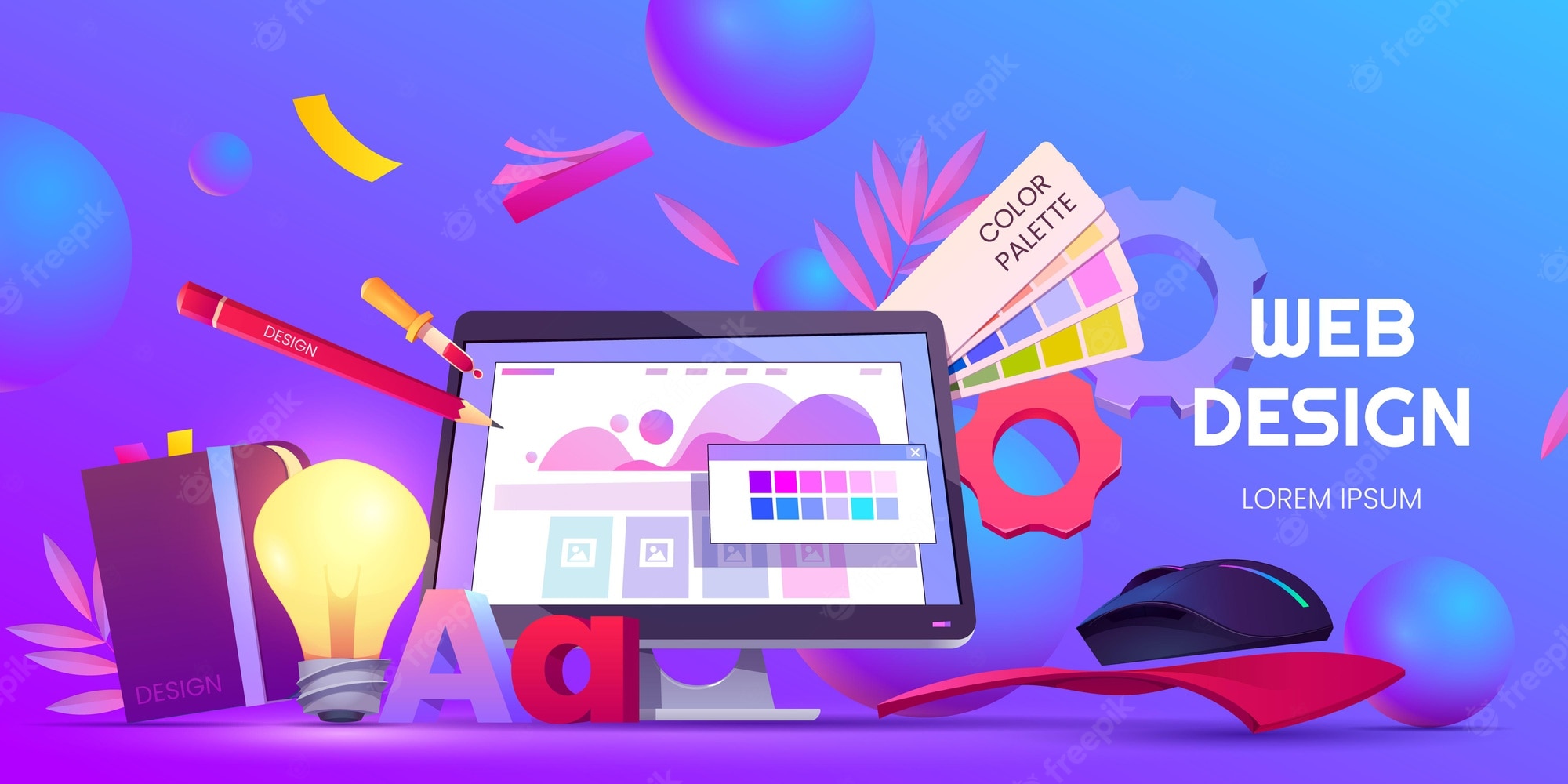Exploring Imaginative Trends in Web Design for Modern Businesses
The landscape of web design is continuously evolving, reflecting the dynamic requirements of modern companies. Current patterns highlight a preference for minimalism, bold typography, and appealing interactivity. Firms increasingly focus on user experience through mobile-first principles and tailored web content. Additionally, a focus on sustainability is acquiring grip. Recognizing these fads is important for organizations aiming to stand apart in a jampacked market. What effects do these shifts hold for the future of electronic involvement?
Welcoming Vibrant Typography
Vibrant typography has become a specifying element in contemporary web design, capturing focus and sharing messages with striking clarity. This pattern focuses on visually impactful text that improves user engagement and brand name identity. Developers typically utilize distinct fonts and large typefaces to create a hierarchy, leading visitors with content perfectly.
The calculated use of vibrant typography permits reliable storytelling, making it possible for brand names to communicate their worths succinctly. It offers not only visual purposes however additionally practical ones, as it enhances readability throughout devices and display dimensions.
As web sites compete for user focus, vibrant typography sticks out in a saturated digital landscape. Its flexibility allows developers to explore contrasting designs and colors, additionally intensifying its efficiency. Ultimately, accepting strong typography represents a change in the direction of more meaningful and communicative web design, cultivating a much deeper link between brands and their audiences.
The Increase of Minimalist Layout
As electronic atmospheres end up being significantly cluttered, the surge of minimalist design supplies a rejuvenating alternative that prioritizes simplicity and functionality. This layout viewpoint strips away unnecessary components, permitting content to take spotlight. By focusing on tidy lines, adequate white room, and a minimal color scheme, minimal layout improves user experience and enhances navigating.
Services adopting this pattern aim to share their brand message clearly and effectively, promoting a feeling of tranquility and clarity. The lack of disturbances assists customers concentrate on essential details, resulting in improved engagement and conversion prices. In addition, minimalist style aligns well with mobile-first techniques, guaranteeing that web sites remain user-friendly and easily accessible across different tools.
Inevitably, the increase of minimal style reflects a more comprehensive shift in the direction of prioritizing user demands and preferences, making it an effective device for modern companies seeking to make a long lasting influence in the digital landscape.
Immersive Animations and Interactivity
While lots of web designers accept minimalist appearances, another engaging pattern acquiring traction is making use of immersive computer animations and interactivity. This technique boosts user involvement by creating appealing experiences that draw visitors into the material. Developers utilize dynamic components such as computer animated backgrounds, scrolling results, and interactive infographics to communicate complicated ideas in an obtainable manner.
These animations not just provide visual rate of interest however likewise overview users with the navigating process, making communications a lot more intuitive. For circumstances, float results and animated shifts can motivate individuals to check out better, causing boosted time invested in the website.
In addition, this pattern straightens with the broader movement in the direction of storytelling in web design, where computer animations offer as narrative gadgets that convey brand name messages properly. By integrating immersive computer animations and interactivity, services can differentiate themselves in a crowded online landscape, ultimately improving user fulfillment and brand name commitment.
Mobile-First Design Principles
Mobile-first design principles highlight focusing on user experience by guaranteeing web sites operate seamlessly on smaller sized screens. This method integrates receptive layout techniques that adapt to numerous device dimensions while preserving aesthetic honesty. In addition, it focuses on touchscreen navigation style, improving functionality for mobile customers.
Prioritizing User Experience
Just how can developers successfully focus on user experience in a progressively mobile-centric globe? Highlighting mobile-first design concepts is necessary, as individuals primarily engage with internet sites through mobile phones. This approach urges designers to streamline material, guaranteeing it is conveniently obtainable and navigable on smaller screens. Key practices consist of streamlining navigation, decreasing lots times, and employing touch-friendly elements that improve interactivity. Additionally, prioritizing legible typography and intuitive formats can greatly improve user complete satisfaction. Designers need to continually gather user comments to refine their approaches, adjusting to advancing user requirements and preferences. By focusing on these aspects, organizations can develop an appealing electronic experience that cultivates loyalty and drives conversions, eventually aligning with the assumptions these days's mobile customers.
Responsive Layout Methods
Developers embrace responsive format techniques to produce flexible and adaptable web experiences that deal with various display sizes. This method focuses on mobile-first layout concepts, making certain peak performance on smaller sized devices prior to scaling up for larger screens. By making use of fluid grids, versatile images, and media queries, designers can keep a natural aesthetic identity across all platforms. This strategy not only boosts user engagement but additionally boosts internet search engine rankings, as mobile-friendly websites are favored by search algorithms. In addition, responsive designs allow services to get to a more comprehensive target market, fitting users on smart devices, desktop computers, and tablets alike. Overall, applying these techniques is necessary for contemporary web design, guaranteeing that companies stay affordable in an ever-evolving digital landscape.
Touchscreen Navigation Layout
With the surge of mobile phones, touchscreen navigating has ended up being a fundamental element of web design. Designers are increasingly adopting mobile-first principles to enhance user experience and involvement. web design company. Efficient touchscreen navigation prioritizes larger buttons and user-friendly gestures, allowing customers to communicate easily with web content. This strategy decreases irritation and encourages exploration, as users can navigate effortlessly with their fingers. Furthermore, including swipe gestures and tap capability accommodates the natural behaviors of mobile individuals. Comments mechanisms, such as visual cues and computer my link animations, enhance functionality better by verifying actions. As touchscreens dominate user interactions, utilizing these design elements not only lines up with modern-day expectations but also cultivates a much more enjoyable and obtainable surfing experience for all individuals
Individualized User Experiences
What makes a customer really feel truly involved on a web site? The solution frequently lies in individualized user experiences. By customizing web content and navigation to individual preferences, organizations can develop a meaningful connection with their target market. This personalization can be attained through various methods, such as analyzing user behavior, utilizing cookies, and offering customized recommendations based upon previous communications.
For example, shopping systems that suggest products based on browsing background not just enhance user experience however likewise increase conversion rates. Integrating vibrant material that adjusts to the user's place or time of day can even more enhance engagement.
Additionally, individualized introductions or messages can make individuals really feel valued and comprehended. As contemporary companies venture to stand out in a competitive electronic landscape, embracing customized user experiences becomes important, cultivating commitment and encouraging repeat gos to. Eventually, this approach changes a standard site into an interactive platform that reverberates with its audience.
Sustainability in Web Design
As the digital landscape proceeds to develop, the importance of sustainability in web design has actually gotten considerable focus. Developers are significantly aware of the ecological impact their developments can have, prompting a shift in the direction of green methods (Web Design Agency). Lasting web design concentrates on maximizing websites to reduce power intake and carbon footprints. Approaches include using minimalistic style principles, enhancing pictures, and using effective coding methods to boost loading speeds
Furthermore, the choice of holding suppliers plays an important function; several developers are now selecting green holding solutions powered by sustainable energy. By prioritizing accessibility and easy to use navigation, sustainable styles additionally provide to a broader audience, enhancing functionality. This conscious approach not only appeals to environmentally-minded consumers however also adds to the total durability and performance of sites. Eventually, sustainability in web design reflects a growing pattern towards accountable digital methods that align with modern-day company values.

Frequently Asked Questions
Just How Can I Select the Right Color System for My Web site?
To select Homepage the right color plan for a website, one must think about the brand name's identity, target market, and emotional influence. Utilizing shade concept and screening mixes can boost user experience and visual allure substantially.
What Are the very best Tools for Prototyping Website Design?
The ideal devices for prototyping internet layouts consist of Figma, Lay out, Adobe XD, and InVision. These platforms supply intuitive user interfaces, collaboration attributes, and considerable collections, making them suitable for developers to produce and refine their principles efficiently.
Exactly how Do I Gauge the Performance of My Web Design?
To determine web design effectiveness, one need to evaluate user engagement metrics, conversion rates, and usability responses (Web Design Agency). A/B screening and heatmaps can also provide insights right into user actions, leading necessary changes for enhanced performance and user experience
What Prevail Web Design Errors to Prevent?
Typical web design errors consist of messy formats, poor navigating, slow-moving loading times, absence of mobile optimization, inadequate contrast, and neglecting user feedback. Preventing like it these risks improves user experience and raises overall efficiency of the site.
Just how Often Should I Update My Web Site Layout?
An internet site style ought to be upgraded every two to three years, or earlier if significant modifications in branding or modern technology occur. Normal updates keep the website fresh, useful, and aligned with present user assumptions.
